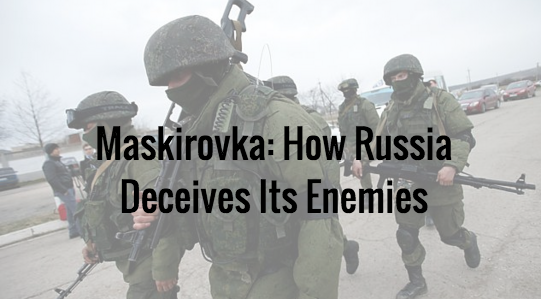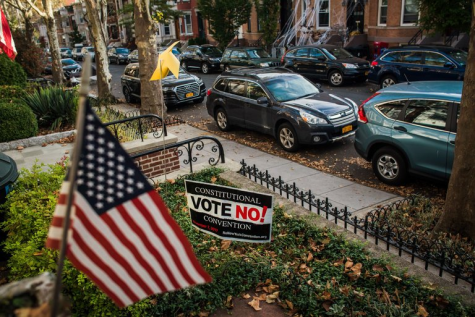Unmasking Russian Politics

Russia’s recent actions on the global stage have many people concerned, but many more are confused.
This confusion is largely a product of Russia’s Maskirovka tactic, which has been used for centuries to deceive and disorient their enemies. Understanding this tactic can shatter the mirrors and blow away the smoke surrounding Russian actions.
Maskirovka translates from Russian to “masking” or “camouflage,” and that was the extent of the tactic while it was in its infancy. An early example of Maskirovka is the battle of Kulikovo field in 1380 C.E., in which the Russian forces were able to defeat a larger attacking force of Tatars by hiding soldiers in a tree line to surprise the enemy.
The tactic continued to evolve over time. During the Second World War, Maskirovka came to encompass using more than just camouflage, but also creating it. The Russian forces would make use of the cover of night or create smoke screens to hide the movements of their troops. They also began to overtly use deception tactics to not only camouflage their troops but to also misinform the enemy.
During the Jassy-Kishinev operation, the Russians made liberal use of fake tanks and sent entire regiments in odd directions just to confuse the Nazi commanders. That operation, and many others like it, was a success that helped the Allies to win the war. World War II marks an important transition in Maskirovka from simple camouflage to active deception through misinformation.
After its use in the Second World War, Maskirovka’s use was expanded. Where before it was used purely on the battlefield as a part of combat, now it came into use at the political level. The KGB made liberal use of Maskirovka, and some of Russia’s biggest moves during the Cold War, such as the Cuban Missile Crisis, are examples of Maskirovka being used in a more political sense.
Now, this tactic has seen liberal use within the past year. When Russia invaded the Crimea, it wasn’t long before mysterious green-clad soldiers with no insignia appeared in Crimea to help the Russians in their annexation effort. It’s apparent now that these “Little Green Men” were actually Russian Special Forces, but Mr. Putin denied ever sending soldiers to infiltrate Crimea. He claimed they were Ukrainian separatists who voluntarily went to Crimea to liberate it. At the time, the doubt caused by the Russian deception was enough to cause hesitation and confusion in the west, allowing the annexation of Crimea to be completed.
Another example of Maskirovka during the Crimean annexation was the “humanitarian” convoy that Russia sent over the border. When Russia announced that it would be sending a humanitarian aid convoy to the Crimea, the news breathlessly followed the progress of the convoy, spluttering over theories of a Trojan horse scheme. Meanwhile, munitions and weapons were smuggled across the Ukrainian border while the west’s attention was fixed on the convoy.
Keeping Maskirovka in mind while considering Russia’s actions around the world can help people to see what Russia’s goals are, and not get distracted by misinformation–or camouflage.








